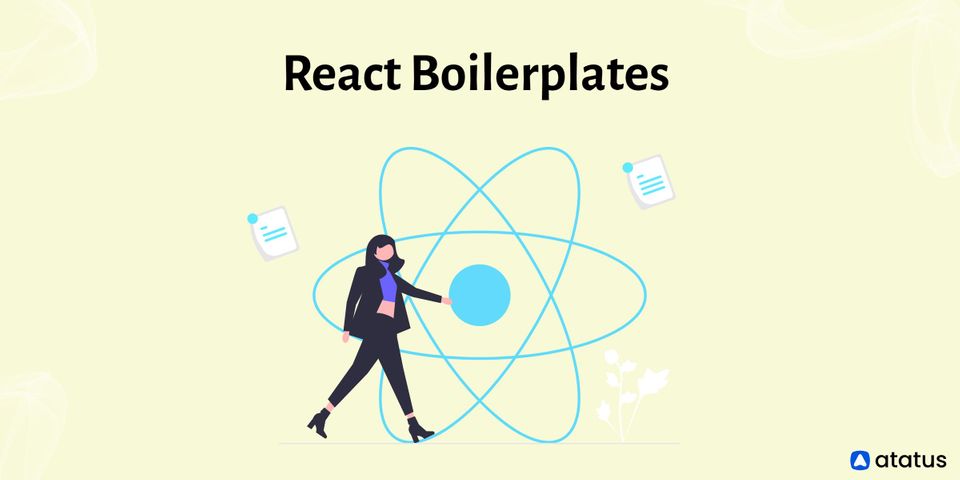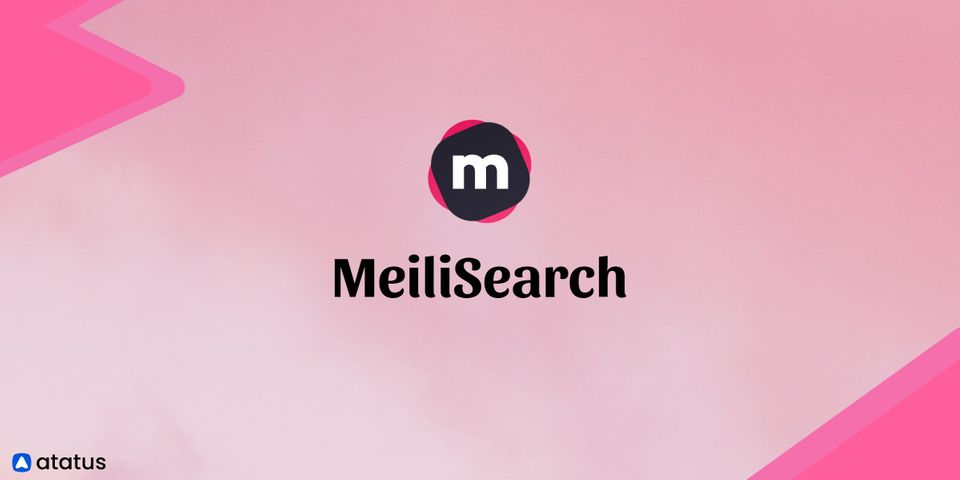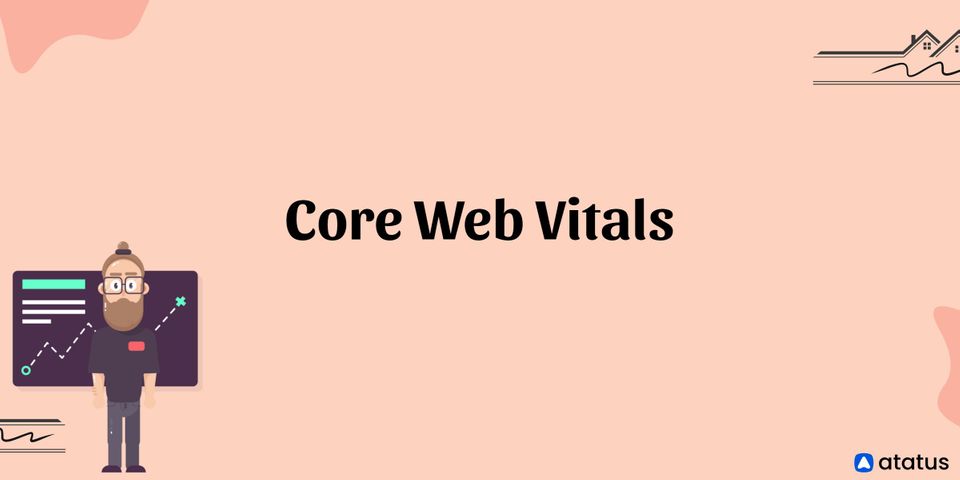Top 9 React Boilerplates to Know in 2025
React has gained popularity recently and is now among the most cherished frontend frameworks ever. React has consistently placed in the top two positions in the State of JS survey for the past five years, which serves as evidence. Additionally, this indicates that more developers than ever are creating projects in React.
The React library benefits from the use of boilerplates, which are lines of code that are neutral by design and serve as a natural starting point when developing with any technology.
We shall examine what React boilerplate is and the top 9 such React boilerplates in this article.
We will cover the following:
What is React Boilerplate?
A boilerplate (also known as boilerplate code) is a section of code that can be repeatedly used to duplicate certain sections of code.
According to Wikipedia,
“Boilerplate is a section of code that is repeated in multiple places with little to no variation. When using languages that are considered verbose, the programmer must write a lot of boilerplate code to accomplish only minor functionality”.
A free and open-source programming tool is Reactjs Boilerplate. Additionally, by replicating sections of the code, react boilerplates assist you to shorten the development process. A react boilerplate offers writing, actual text, and graphics while a template provides a so-called case frame or layout of your options.
Boilerplate code saves developers time and provides comfort because they write a lot of code. Clone a boilerplate in Github to use it for your project's requirements if you want to benefit from it. Then, to update code changes, use a hot reloading function.
When Should You Use React Boilerplate?
The size of your project will determine whether you use React boilerplate. Boilerplates work best for quick and flexible web applications. Investing time and energy in deep learning, DevOps toolchains, etc. for long-term and time-consuming websites is preferable.
On GitHub, there are a few hundred React boilerplates, to be honest. Therefore, having a defined objective is necessary before choosing one or a few. You might use React, TypeScript, Redux, etc. to develop applications.
For various uses, we've carefully chosen 9 React boilerplates.
9 Best React Boilerplates in 2025
- Create React App
- React Boilerplate
- Gatsby
- React Starter Kit
- Razzle
- TSDX
- Neutrino
- React Next Boilerplate
- Rekit
#1 Create React App
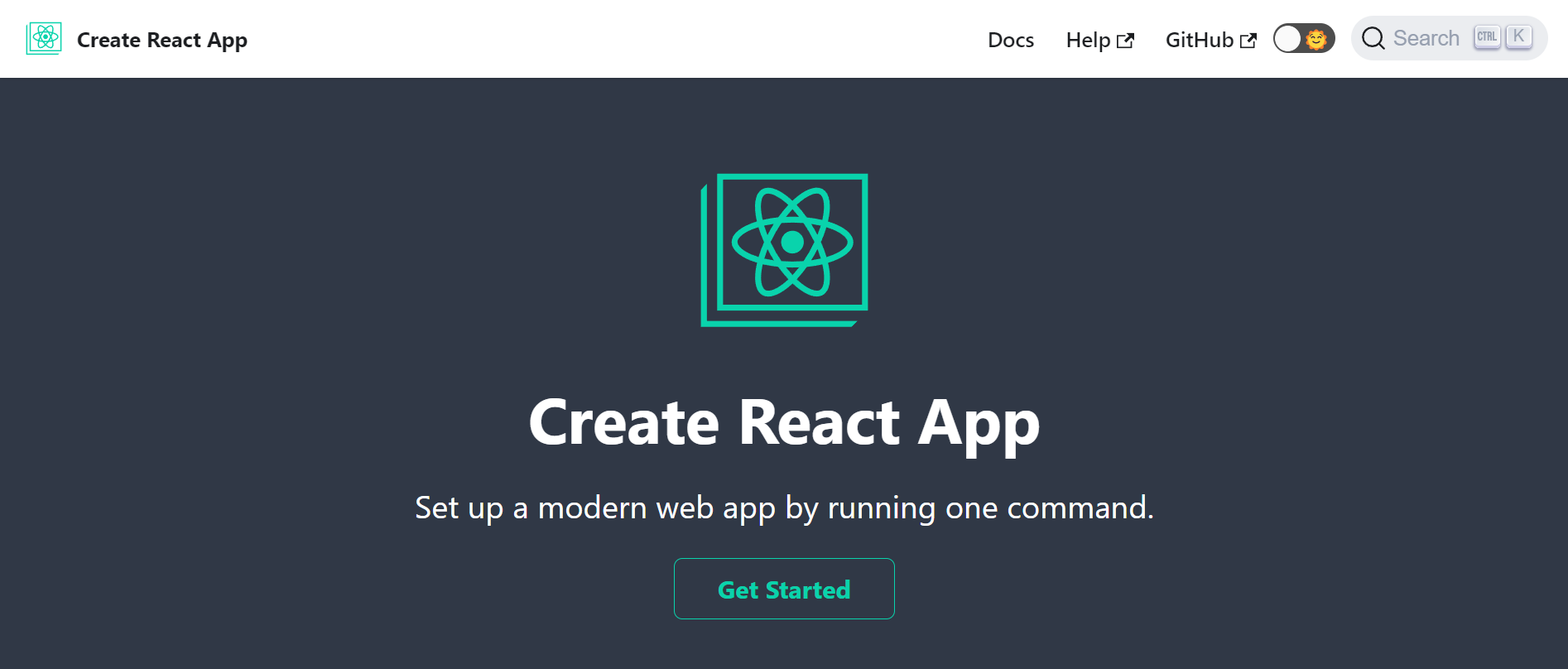
Create React App makes it simple to start developing your single-app application. Webpack and the Babel transpiler are available here. Webpack is a library used to bundle JavaScript modules for browser use, while Babel makes your code understandable for outdated browsers.
Create React App, a tool provided by Facebook enables you to create a modern web application by executing a single command with no setup. This is one of the top reactjs boilerplates.
For those new to React programming, Create React App is frequently recommended react boilerplate since only those who are familiar with React technology in depth will truly benefit from a variety of React boilerplate libraries.
Create React App is a useful tool for creating simple applications and quickly configuring them. These kinds of technologies, however, are only partially useful when creating complex applications. Node 8.10 and at least version 5.2 are prerequisites for Create React App.
Feature:
- 6 workable applications
- Figma and Sketch File added
- Multi-lingual
- No configuration required
- No lock-in
- One dependency
- RTL supported and many more
#2 React Boilerplate
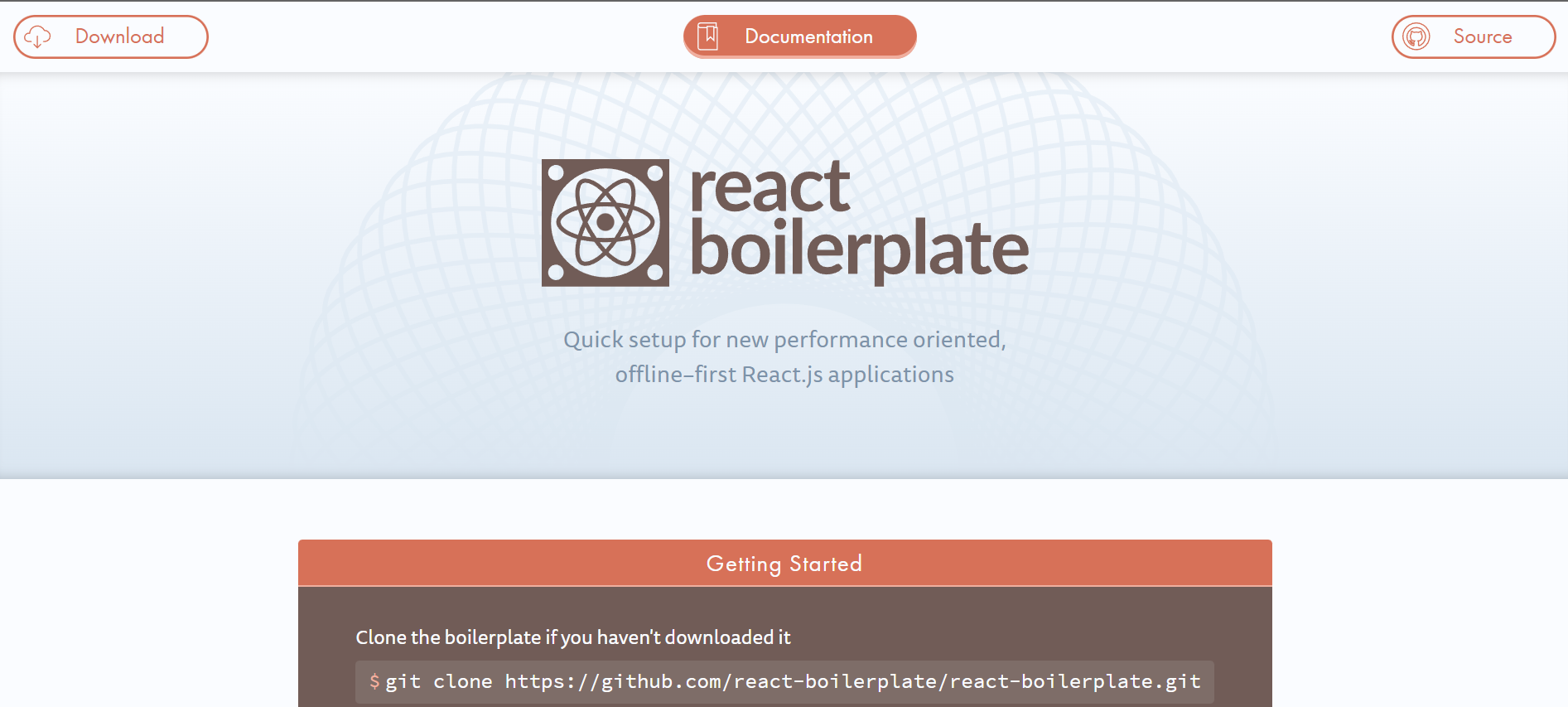
React-boilerplate is another tool that should be included on the list for setting up a React project. React-boilerplate advertises its availability through its application even when there is no network connection and promotes itself as the future of fast web apps on its landing page.
React boilerplate is a reliable and well-designed boilerplate in the Javascript UI Libraries, with 28.2k ratings on GitHub. The super-rich component and font base, together with Redux, Mocha, Redux-Saga, Jest, React Router, PostCSS, and reselect are all included. They support SEO indexing. Concentrating on app development and performance is more than enough.
Feature:
- Quick scaffolding
- Instant feedback
- Predictable state management
- Next-generation JavaScript
- Next generation CSS
- Industry-standard routing
- Industry-standard i18n internationalization support
- Offline-first
- Static code analysis
#3 Gatsby
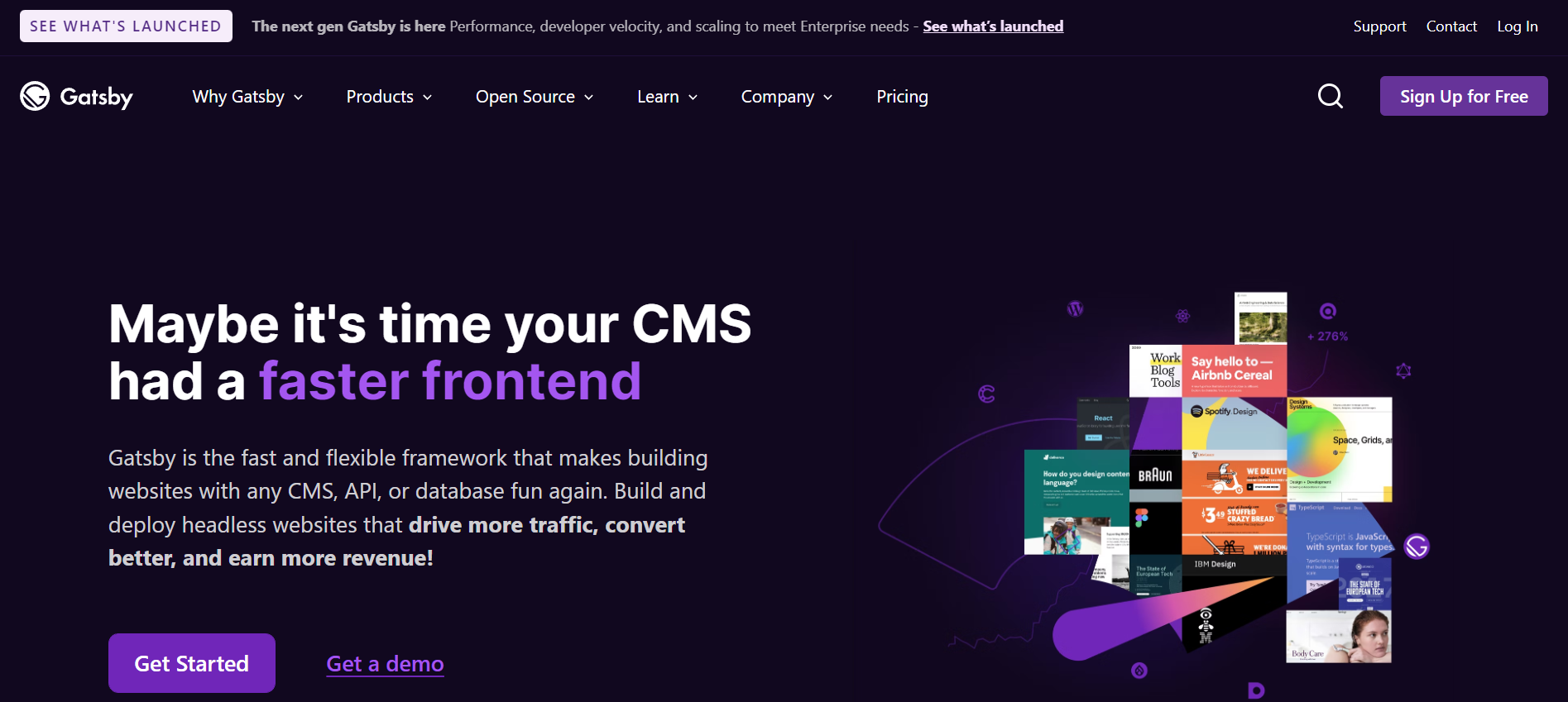
Gatsby is a free and open-source framework based on React that helps developers in creating websites and applications that load incredibly quickly. It produces a whole new web of possibilities by combining the control and scalability of dynamically displayed websites with the quickness of static-site production.
Professional developers can efficiently design maintainable, highly effective, content-rich websites with the help of Gatsby. It offers the quickest outputs of pre-rendered HTML and CSS to ensure the quickest load time and contains a gallery of starter kits.
Feature:
- Load data from anywhere
- Go beyond static websites
- Choose your rendering options
- Performance is baked in
- Use a modern stack for every website
- Host at scale for pennies
#4 React Starter Kit
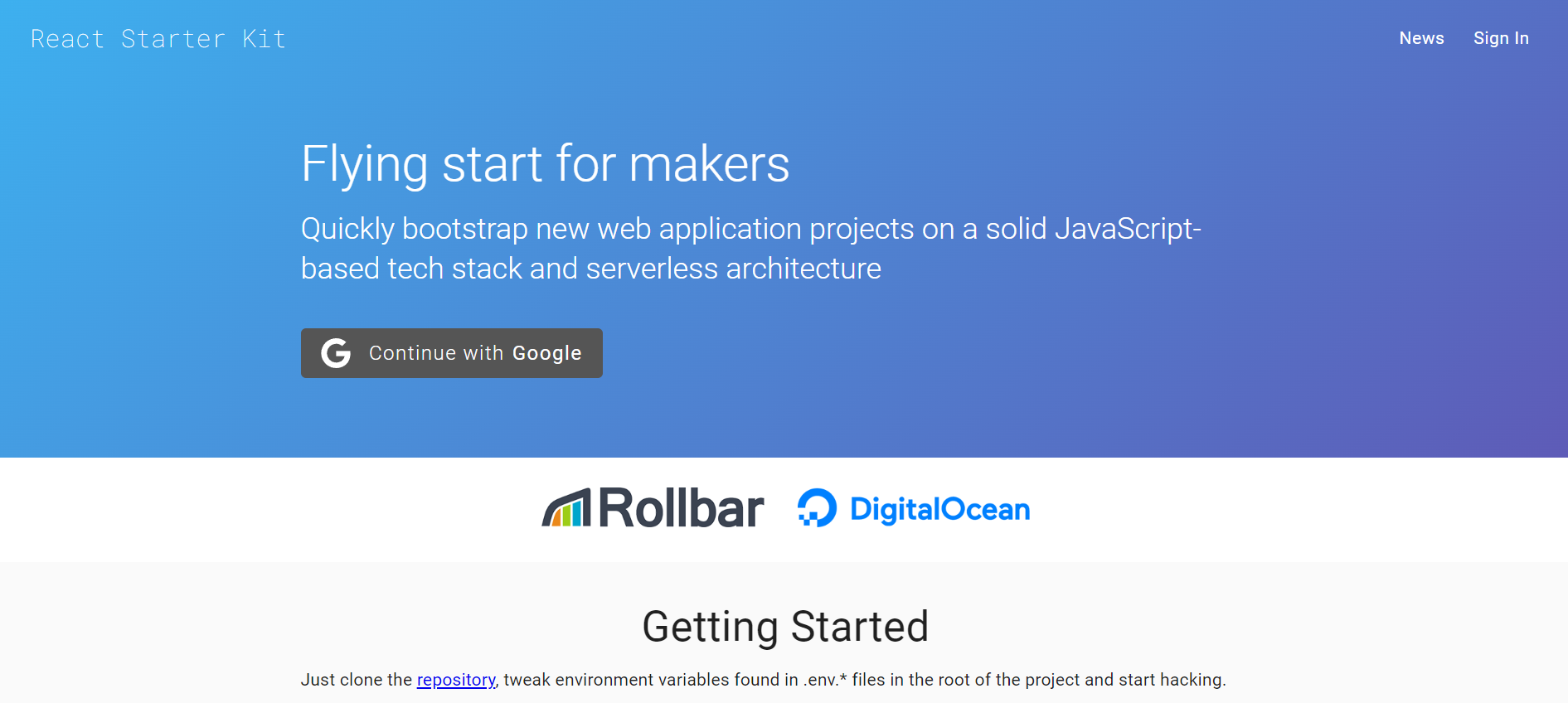
React Starter Kit is described as an isomorphic web app boilerplate. Additionally, React Starter Kit is described as very opinionated on the homepage, which implies that it has already chosen our tech stack for us, which consists of Node.js, Express, and GraphQL.
The React library, which has 20.6k stars, served as the foundation for Kriasoft's isomorphic starter kit. Modern web development tools including Node.js, Express, GraphQL, Babel, PostCSS, Webpack, and Browsersync are used by React Starter Kit.
There are no Flux implementations or any sophisticated integrations in the React Starter Kit's master branch. It is GraphQL for its Data API.
Feature:
- Achieved serverless deployment optimization for CDN edge sites
- HTML page rendering (SSR)
- Hot module replacement during local development
- Pre-configured with CSS-in-JS styling
- Pre-configured with code quality tools
- Pre-configured with VSCode code snippets
#5 Razzle
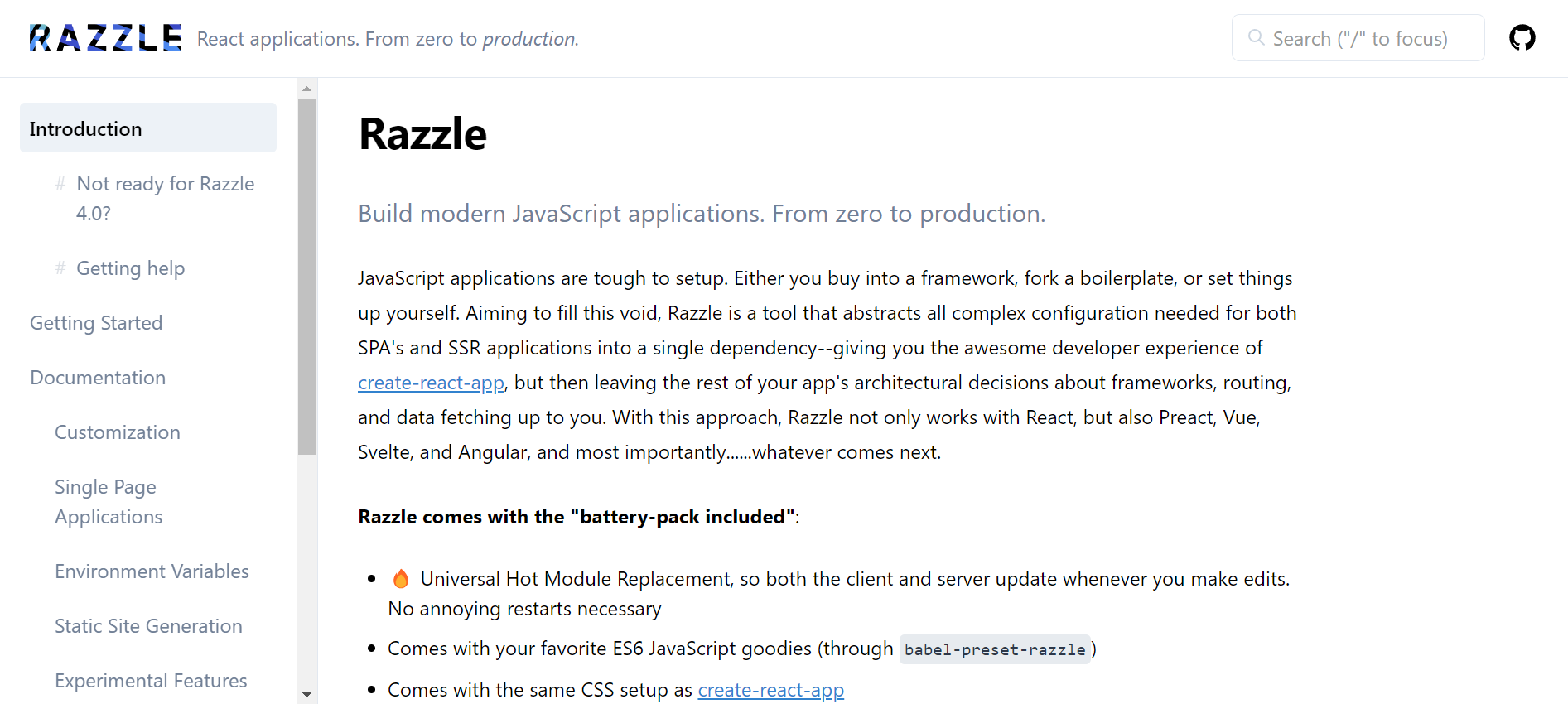
Razzle is a tool that compresses all the complex settings required to create SPAs and SSR applications into a single dependency. Giving you the fantastic create-react-app developer experience, while leaving the remaining architectural choices for your application—including frameworks, routing, and data fetching—up to you.
Razzle uses this method to operate with a variety of frameworks, including Angular, Preact, Vue, Svelte, and not just React. While your app is running, just type rs in the console and press Enter to restart your server.
Feature:
- Includes all of your favorite ES6 javascript goodies
- Has the same CSS configuration as create-react-app
- Works with React, Preact, and Reason
- Escape hatches for customization
- Setting up the Jest test runner with reasonable settings using razzle test
- Create client-side apps with Razzle in SPA mode
#6 TSDX
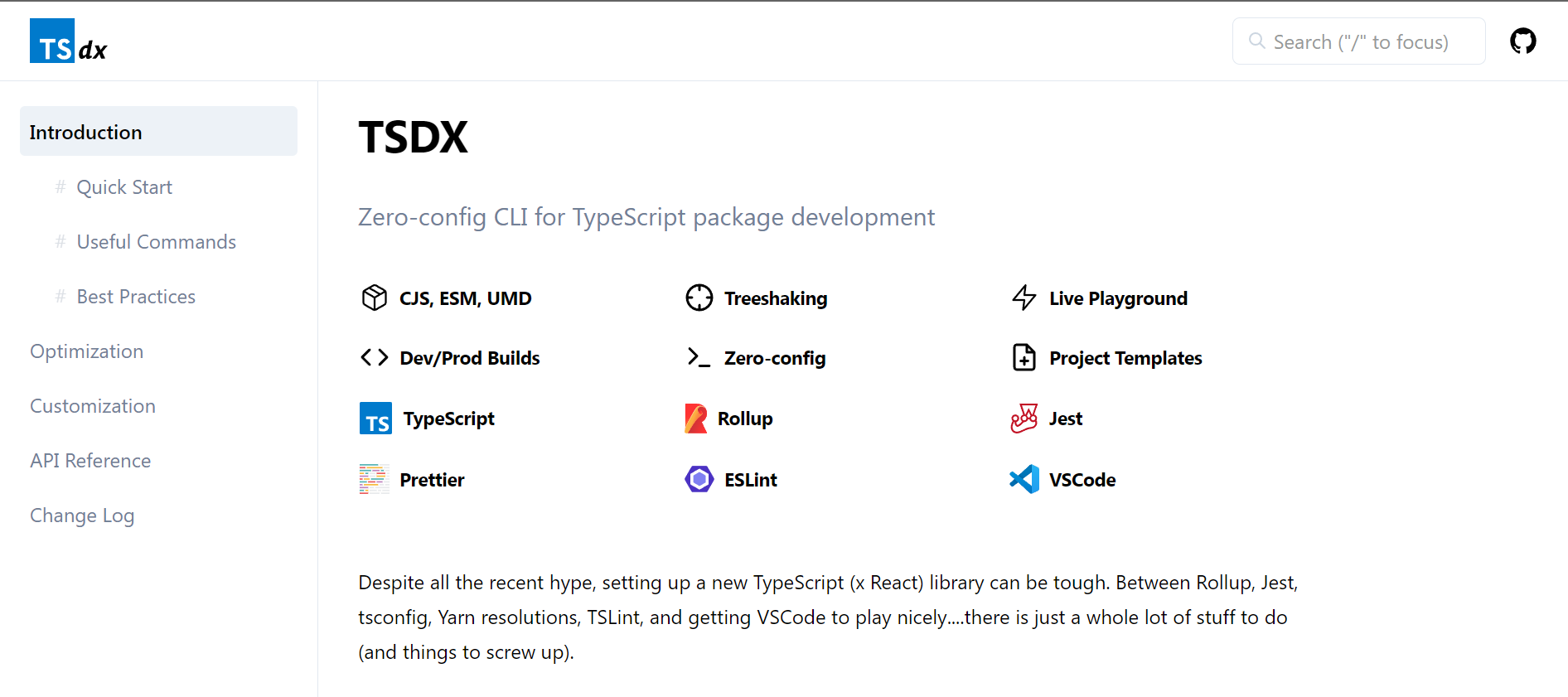
TSDX is a zero-config CLI that makes it simple to create, test, and distribute contemporary TypeScript packages, allowing you to concentrate on your awesome new library and not lose any more time to configuration.
Although there has been a lot of recent enthusiasm, creating a new TypeScript (x React) module might be challenging.
To make things easier for you, TSDX offers a unique logger. Error messages are nicely written and styled to work with the Problems tab in VS Code.
TSDX offers you additional conveniences in addition to simply packing your module into various forms. They produce objectively superior code and bundle sizes that are smaller.
Feature:
- Includes treeshaking, ready-to-rock lodash optimizations, and minification
- Live reload / watch-mode
- Works with React
- Human-readable error messages
- Bundle size snapshots
- Jest test runner setup with sensible defaults
- ESLint with Prettier setup with sensible defaults
- Zero-config, a single dependency
- Escape hatches for customization
#7 Neutrino
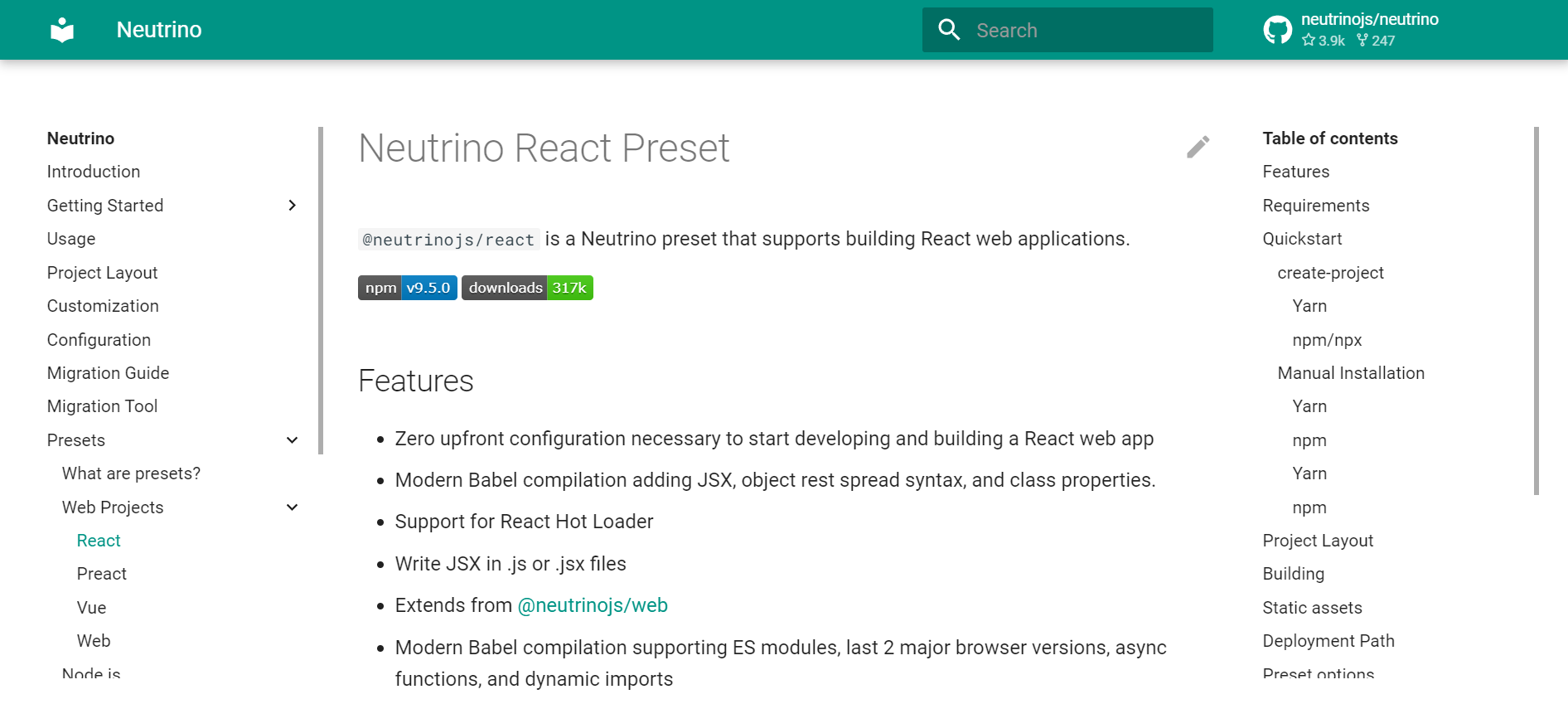
With the use of shared presets or configurations, you can create web and Node.js applications using Neutrino, a companion tool. By offering the bare minimum in terms of development dependencies, it seeks to greatly simplify the initialization and construction of projects.
By offering comprehensive build presets that can be shared between targets and projects, Neutrino uses Webpack to build both web and Node.js applications.
You can start by using Neutrino's base presets to build a range of projects, or you can expand the core presets to make your own presets that can be used by the community or shared among your projects. Presets can also be modified project-by-project to meet practically any construction condition that isn't covered by your preset.
Feature:
- Zero upfront configuration is necessary to start developing and building a React web app.
- JSX, object rest spread syntax, and class properties are now included in the modern Babel compilation.
- Support for React Hot Loader
- Importing HTML, CSS, images, icons, and fonts using Webpack loaders
- Automatic HTML page creation without the need for templates
- Easy to extend to fulfill your project's needs
- Webpack Dev Server during development
- Hot Module Replacement support including CSS
- Tree-shaking to create smaller bundles
#8 React Next Boilerplate
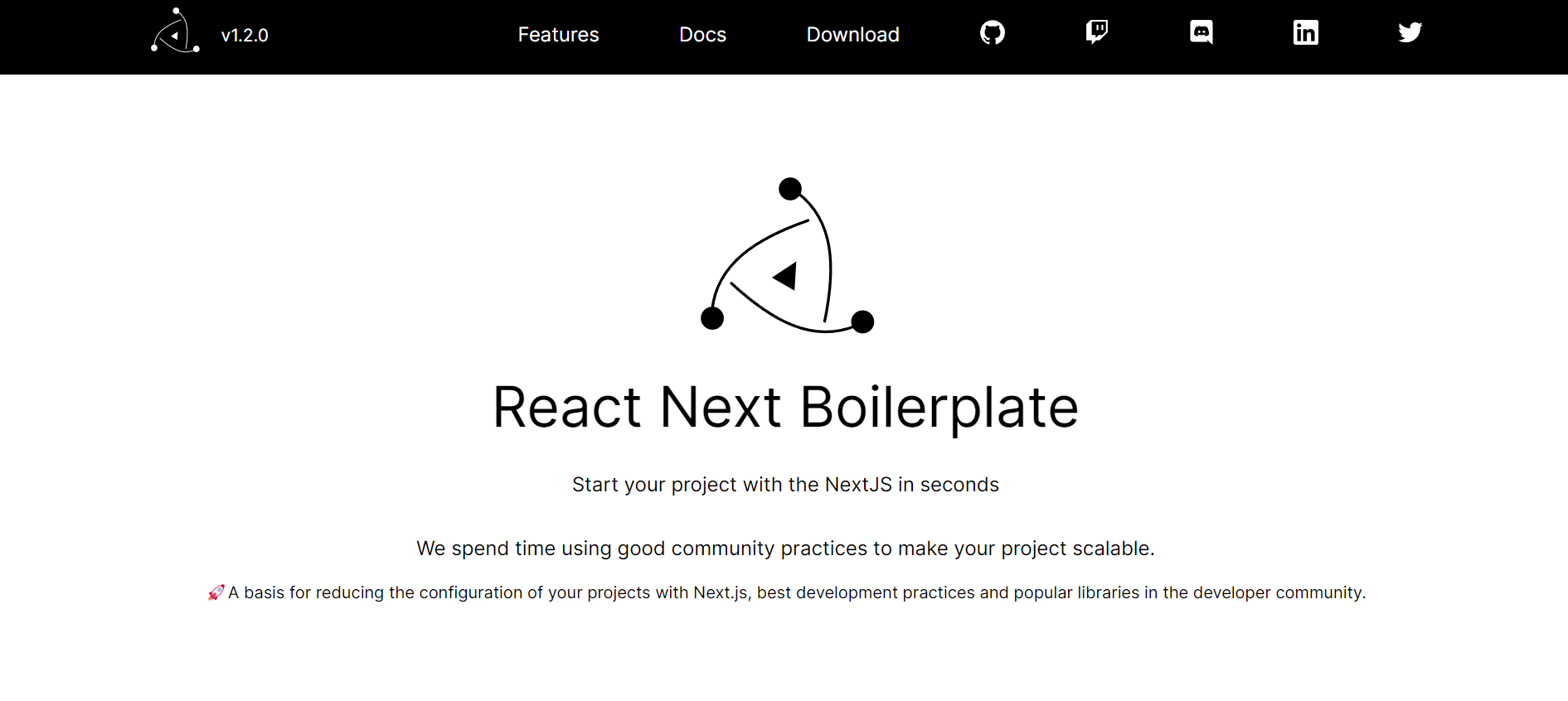
The React Next Boilerplate serves as a base for simplifying the nextJS project configuration. The top development techniques and widely used developer libraries are included in this React Next JS boilerplate.
Additionally, it includes react-saga, a package designed to improve application side effects—asynchronous actions like data fetching and impure actions like accessing the browser cache—easier to manage, more effective to carry out, simpler to test, and better at handling errors.
Furthermore, it includes next-i18next. It is a Next.js project plugin that enables rapid and simple translation setup while fully supporting SSR, multiple namespaces with code splitting, etc.
Feature:
- A smart action creator for Redux
- A plugin for Next.js projects
- An internationalization framework is written in and for JavaScript
- Simple selector library for Redux
- Simple and complete React DOM testing
- Able to create rich user experiences
- Self-hosting is significantly faster
- A JavaScript library created for writing CSS styles
#9 Rekit
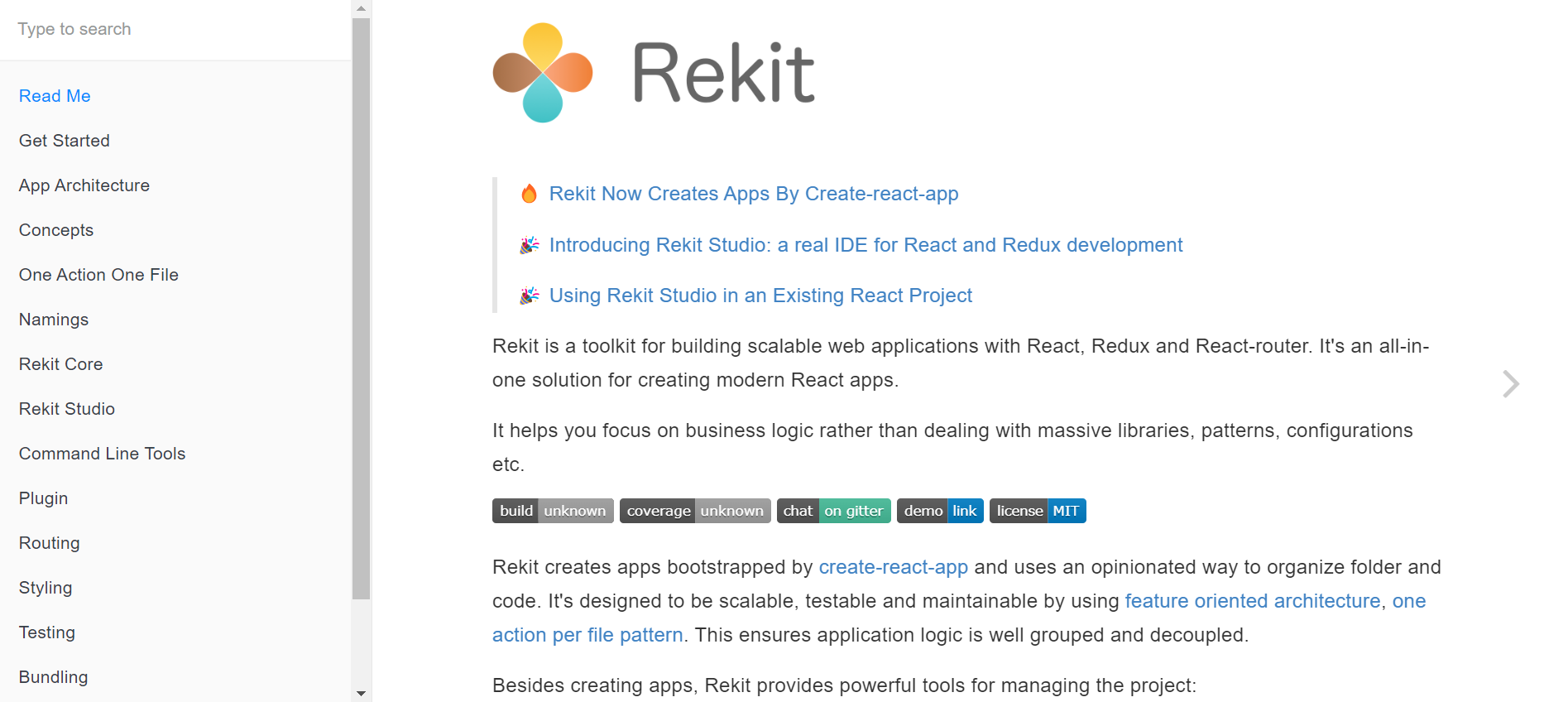
Rekit is a toolkit for creating web applications that are scalable and use React, Redux, and React-router. It enables you to concentrate on business logic rather than dealing with extensive libraries, patterns, configurations, etc.
Rekit uses an opinionated system of folder and code organization while building applications that are bootstrapped using create-react-app. By utilizing a feature-oriented architecture and the one action per file pattern, it is created to be scalable, testable, and maintainable. This makes sure the grouping and decoupling of application logic are good.
Rekit has been using create-react-app to build applications since March 2018 and focuses on offering the framework—at the level of an IDE—for developing and scaling the application from boilerplate to large-scale projects. Be aware that it will enforce a particular folder/code structure that you may find unpopular.
Feature:
- It's production-ready but not a starter kit
- Zero additional configuration is needed after creating an application
- Dedicated IDE for Rekit development
- Manage actions, reducers, components, and pages with command-line tools.
- Use Webpack 3 for bundling
- Use Babel for ES2015(ES6)+ support
- Use Redux for application state management
- Use Less or Sass as CSS transpilers
- Use jest, an enzyme for testing
- Support Redux dev tools
Finally!!!
Finally, it appears that your hunt for some top-notch React boilerplates is over. Each of them has, as we can see, a unique set of features. List the features you require, then make your selection.
It's crucial to pick the correct React boilerplate. It is essential to make the proper choice, particularly for scaling, future maintenance of the application or website, configuration setup, and other tasks.
Web applications that are small and responsive work well with boilerplates. Additionally, it is preferable to put effort into truly deep learning of application architecture if you have long-term, time-consuming websites.
Monitor Your React Applications with Atatus
Atatus keeps track of your React application to give you a complete picture of your clients' end-user experience. You can determine the source of delayed response times, database queries, and other issues by identifying backend performance bottlenecks for each API request.
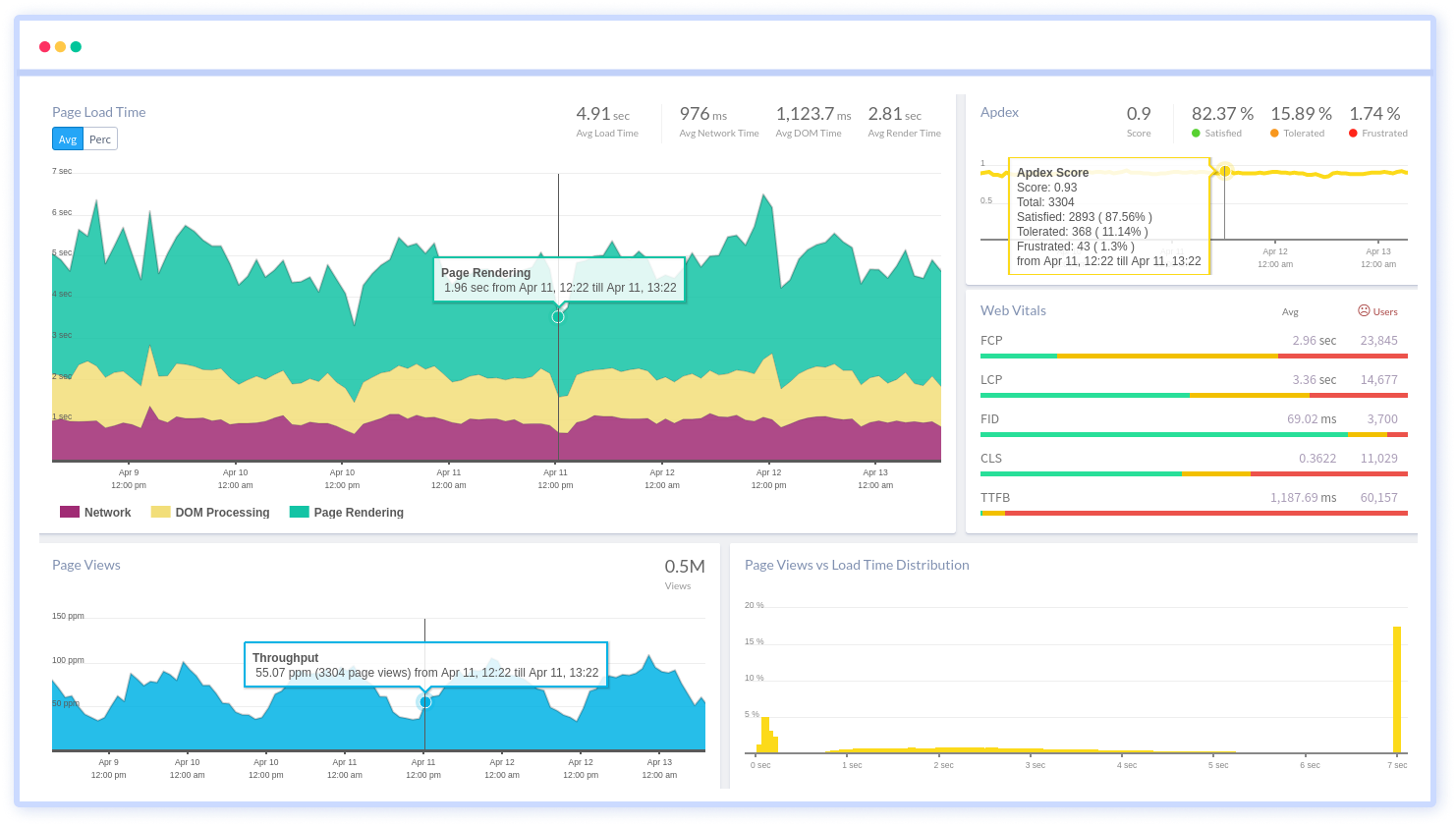
To make bug fixing easier, every React error is captured with a full stack trace and the specific line of source code marked. To assist you in resolving the React error, look at the user activities, console logs, and all React requests that occurred at the moment. Error and exception alerts can be sent by email, Slack, PagerDuty, or webhooks.
#1 Solution for Logs, Traces & Metrics
APM
Kubernetes
Logs
Synthetics
RUM
Serverless
Security
More

